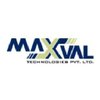
Filter interviews by
Indian Institute of Science Education and Research Project Associate Interview Questions and Answers
Indian Institute of Science Education and Research Project Associate Interview Experiences
1 interview found
I applied via Company Website and was interviewed in Dec 2022. There were 2 interview rounds.

(2 Questions)
- Q1. Basic biology related questions such as biochemistry, molecular biology.
- Q2. Past experiences related questions
Interview Preparation Tips
A practical approach for this would be-
1) Papers published every year
2) Number of years a PhD student takes to finish/ defend their thesis.
3) No. of papers a PhD student graduates with.
Top trending discussions






Interview questions from similar companies

I applied via Recruitment Consultant and was interviewed before May 2020. There were 3 interview rounds.
Interview Questionnaire
1 Question
- Q1. Basic programming questions
Interview Preparation Tips

Senior Associate Interview Questions & Answers
Allied Market Researchposted on 16 Oct 2024
I applied via LinkedIn and was interviewed in Sep 2024. There were 2 interview rounds.
Report writing- you have to present a market research overview on any of industry you can visit on their website for same
(2 Questions)
- Q1. Analyse market trends
- Ans.
Market trends can be analyzed by examining consumer behavior, industry reports, and economic indicators.
Examine consumer behavior through surveys and focus groups
Review industry reports and forecasts for insights
Monitor economic indicators such as GDP growth and inflation rates
Look for emerging technologies or innovations that could impact the market
Consider geopolitical events or regulatory changes that may influence
- Q2. Guest estimate for any industry
- Ans.
Guest estimate for any industry refers to the practice of predicting the number of guests or customers a business may expect to receive within a certain period of time.
Consider historical data and trends to make an educated guess
Take into account external factors such as seasonality, holidays, and economic conditions
Utilize forecasting models or software to help with the estimation process

Consultant Interview Questions & Answers
Future Market Insightsposted on 28 Jun 2024
I applied via Approached by Company and was interviewed before Jun 2023. There was 1 interview round.
(1 Question)
- Q1. Previous company key responsibilities

I applied via Naukri.com and was interviewed in Oct 2020. There was 1 interview round.
Interview Questionnaire
2 Questions
- Q1. Basic Introduction, Why u want to join this company, why u want to do this work?
- Q2. Strengths and weekness, Where do u see urself in x year?
Interview Preparation Tips

Associate Consultant Interview Questions & Answers
Allied Market Researchposted on 6 Sep 2022
I applied via Campus Placement and was interviewed before Sep 2021. There were 3 interview rounds.
Aptitude test contains 2 round - 1. Report writing 2. Basic Apti questions
(3 Questions)
- Q1. Basic Introduction about experience
- Q2. Past experience and resume discussions
- Q3. Questions regarding skills like excel, tablue - simple basic questions
(3 Questions)
- Q1. Basic intro with team manager
- Q2. Discussion about roles and responsibilities
- Q3. Questions regarding primary and secondary research, CATI and CAWI (have you done or not) normal discussion on compensations
Interview Preparation Tips

Associate Consultant Interview Questions & Answers
Future Market Insightsposted on 19 Apr 2023
I applied via Campus Placement and was interviewed before Apr 2022. There were 3 interview rounds.

Questions related to Data Interpretation, logical reasoning and mathematics
(1 Question)
- Q1. What would be my approach for conducting a research for a market?
- Ans.
To conduct research for a market, one should start by defining the research objectives, identifying the target audience, collecting relevant data, analyzing the data, and drawing conclusions.
Define the research objectives and goals
Identify the target audience and market segment
Collect primary and secondary data through surveys, interviews, and market reports
Analyze the collected data using statistical tools and techniq...
Interview Preparation Tips

Associate Consultant Interview Questions & Answers
Future Market Insightsposted on 3 Dec 2024
(1 Question)
- Q1. Basic details personal information experience
Write up on topic given by them

Associate Consultant Interview Questions & Answers
Future Market Insightsposted on 9 May 2024
(1 Question)
- Q1. Market research related and market estimation

(2 Questions)
- Q1. Tell me about you
- Q2. Basically every question asked is related to you given project
I waa given telecom market in indua
Indian Institute of Science Education and Research Interview FAQs
Tell us how to improve this page.
Indian Institute of Science Education and Research Interviews By Designations
- Indian Institute of Science Education and Research PHD Scholar Interview Questions
- Indian Institute of Science Education and Research Project Associate Interview Questions
- Indian Institute of Science Education and Research Research Fellow Interview Questions
- Indian Institute of Science Education and Research Assistant Security Officer Interview Questions
Interview Questions for Popular Designations
- Project Lead Interview Questions
- Technical Project Manager Interview Questions
- Project Manager Interview Questions
- Project Engineer Interview Questions
- Project Manager Scrum Master Interview Questions
- IT Project Manager Interview Questions
- Project Coordinator Interview Questions
- Senior Project Manager Interview Questions
- Show more
Indian Institute of Science Education and Research Project Associate Interview Process
based on 1 interview
Interview experience
Interview Questions from Similar Companies

Indian Institute of Science Education and Research Project Associate Reviews and Ratings
based on 3 reviews
Rating in categories
|
Research Associate
27
salaries
| ₹4 L/yr - ₹8 L/yr |
|
Junior Research Fellow
24
salaries
| ₹2.5 L/yr - ₹5.2 L/yr |
|
Senior Research Fellow
23
salaries
| ₹3.6 L/yr - ₹6.4 L/yr |
|
PHD Research Scholar
15
salaries
| ₹3.7 L/yr - ₹7 L/yr |
|
Post Doctoral Fellow
10
salaries
| ₹5.6 L/yr - ₹9 L/yr |

AXIS MY INDIA

GfK MODE

Edward Food Research and Analysis Centre

Market Xcel Data Matrix
- Home >
- Interviews >
- Indian Institute of Science Education and Research Interview Questions >
- Indian Institute of Science Education and Research Project Associate Interview Questions









